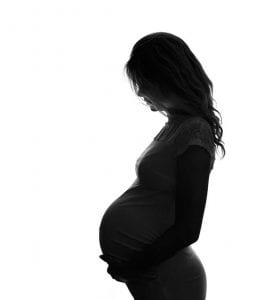Childbirth is certainly one of the most joyful times in a mother’s life, but it is also one of the most stressful. Hormones are haywire, and her body is barely recognizable. She is juggling the needs of a sometimes demanding infant, along with those of her own (and her other family members). Add to all that the tendency for moms to be considerably older these days, and you’ve got a much more complicated picture than during the era of June Cleaver.
scheduled vs. natural childbirth
Opinions differ on how to approach the due date. Do you want to schedule labor, a concept not dreamed of just one generation ago, or do you want to carry to ‘natural term,’ allowing your body to declare when it’s time to deliver your baby? What do the experts say?
timing is everything
“Over the past 10 to 15 years, there definitely has been an increase in patients requesting an induced delivery or Cesarean section,” says Dr. Kent Snowden, a doctor at Saint Louis Associates in OB/GYN on the Mercy Hospital campus in Creve Coeur.
The reasons for scheduled delivery vary widely. “There are medical indications for us to intervene sooner—such as preeclampsia, a variant of hypertension, or if a woman’s membranes rupture early,” says Dr. Gil Gross, SLUCare ob/gyn at SSM Health St. Mary’s Hospital and director of maternal-fetal medicine at Saint Louis University School of Medicine. But there are also optional situations, he says. “Many women have discomforts toward the end of pregnancy, or sometimes there are social reasons for scheduling a delivery: a partner’s travel or work schedule or the availability of their support system.”
The big question is, should a woman wait for nature to take its course? “Babies do as well whether you induce them after 39 weeks (of gestation) or they come naturally,” Snowden says. “But I will tell patients requesting an elective delivery that they are going to have a longer time in the hospital if their cervix is not ready and we have to use medications.”
 due date dilemma
due date dilemma
“One of the big risks of scheduled delivery is delivering a baby that is potentially not ready,” Gross notes. “Sometimes this happens when there is uncertainty about a due date. Less than 5 percent of women will labor or deliver on their due dates. A term human pregnancy has a fairly wide time span, roughly 37 to 42 weeks.”
Several years ago the American Congress of Obstetricians and Gynecologists adopted a policy advising against elective deliveries before the 39th week, Snowden says. “Before that, patients could get to 36 or 37 weeks and say, ‘Gosh, I’m so uncomfortable, can’t you induce labor?’” Research has shown that babies electively delivered earlier than 39 weeks face increased health issues, he says. “There is an increase in neonatal intensive care use, higher chances of hospital readmission and more sick visits to the pediatrician’s office and emergency room.”
what about mom?
“A scheduled delivery implies what is called an induction,” Gross says. “An outside source is going to assist the woman to go into labor. We have medications that can cause contractions. Sometimes the cervix may not be ready for labor, and we may have to use other medications.”
Induced delivery, however, may place mom on a longer road to delivery. “If a woman is not already in labor and requires these interventions, her course is likely going to be much longer than for a woman who is spontaneously laboring,” Gross says.
Snowden agrees. “If the cervix isn’t ready, they are in for a long time in labor and delivery, maybe 24 to 36 hours after admission.” Routinely inducing labor when babies reach their 39th week of development is being considered as a standard protocol, Snowden says.
“The advantage is that the baby is going to be smaller. The baby gains about half a pound a week, so it is going to be an easier vaginal delivery,” he says. “That decreases the chances of needing a C-section, the incidence of stillbirth and other complications. It wouldn’t surprise me if they end up saying we should deliver every baby at 39 weeks.”
recovering from pregnancy
Yes, pregnancy is hard on the body, but today’s relatively active women tend to bounce back pretty quickly. See what the experts say on giving yourself enough time to heal, but also permission to return to ‘normalcy.’
the biology
“Pregnancy puts a lot of strain on a woman,” says Dr. Jodie Rai, an ob/gyn at Women’s Healthcare Consultants of St. Louis on the campus of Missouri Baptist Medical Center. “There are anatomical changes that result from the growing size of the abdomen. Muscles are stretched, and a lot of strain is put on the pelvis floor, which supports many of the organs,” she says. “There is strain on the lower back and posture changes—the shoulders are thrown back and the belly is thrown forward. There are changes in breathing as the size of the uterus pushes up on the lungs.”
Another physiologic response—release of the hormone relaxin—alters the body’s structure, says Gregory Kleinschmidt, a chiropractor at WellBody Acupuncture and Chiropractic Clinic. “Relaxin is systemic. It affects mostly the ligaments affected by pregnancy in the pelvis, thigh joints and the pubic symphysis (the joint between the left and right pubic bones),” he explains. “Once you have delivered a baby, your pelvis is not as stable as before it gave birth. Often there is a feeling of imbalance.”
rest, but not too much
“After the baby is born, the body can recover quite quickly,” Rai says. “It depends on how physically fit the woman is. Things start to return to normal within a few days. We encourage women to return to physical activities almost immediately. Activity reduces the risk of immediate problems such as pneumonia and blood clots.”
Exercise should begin when the woman feels like she is ready, adds Kleinschmidt. “Movement truly is medicine—it inhibits pain, helps you feel better and can help you come out of any post-partum depression a little bit quicker.”
Rai suggests starting with brisk walking and riding a stationary bicycle—but no running or strenuous exercise until the baby is 6 weeks old. Take it easy on the abdominal and back muscles at first, she says. Women who delivered through a C-section are advised to delay strenuous exercise until six to eight weeks after delivery. “We want to minimize the risk of injury to the abdominal muscles, the lower back and the pelvic floor,” she explains.
On the other hand, she says, “I encourage them to start kegel exercises right away to make the muscles of the pelvic floor stronger.” For women who are breastfeeding, “I tell them to nurse before they exercise to make the exercise more comfortable. And make sure they wear a supportive bra.”
As for weight loss, Rai tells patients to lose no more than one pound every two weeks. “If women lose weight too fast while they are breastfeeding, it can affect the quantity and quality of their breast milk,” she says.
bouncing back
“There are increased nutritional requirements for a woman after a baby is born, especially if she is breastfeeding,” Rai says. It’s important to get enough iron. I tell patients to continue their prenatal vitamins and that the best source of iron is meat.” Vitamin C assists iron absorption. Post-delivery women also need protein —dairy products, eggs and meat. Added calcium can come in nutritional supplements and dairy products. “For women who are vegetarian or vegan, I look at their diet and figure out ways we can work with them,” Rai says.
She does not offer an opinion on placenta capsules, which are created by dehydrating and grinding the woman’s placenta following birth. “There is no medical evidence that ingesting the placenta increases one’s energy or reduces the risk of post-partum depression.”
pregnancy as you age
It’s great that couples who have put off childrearing until later in life can now experience the joys of parenthood, but older parents come with their own set of special considerations and risks.
understand the risks
“Last night I delivered a baby to a 42-year- old, her first,” says Dr. David L. Weinstein, an ob/gyn at Missouri Baptist Medical Center and Barnes-Jewish Hospital. A few decades ago that would have been considered a miracle. Nowadays, it barely raises eyebrows.
But older pregnancies increase health risks for the baby and the mom, says Dr. Shilpa Babbar, a SLUCare ob/gyn at SSM Health St. Mary’s Hospital. “The definition of advanced maternal age is 35 or greater,” she says. “The most common concern is for genetic or chromosomal abnormalities affecting the baby. Also, older women are at a higher risk of medical conditions such as high blood pressure and diabetes that can complicate a pregnancy.”
Weinstein adds that getting pregnant after 35 tends to be harder, and the miscarriage rate is slightly higher.
trending: older moms (and dads)
Birth rates for women in their 20s have declined since 2000, while rates for women over 30 have increased, according to the National Centers for Disease Control and Prevention.
In 2000, the birth rate for 25- to 29-year-old women was 113.5 per 1,000 women. In 2014, the rate fell to 105.8. Over the same years, the rate for women age 30 to 34 increased from 91.2 per 1,000 women to 100.8; for women age 35 to 39, it went from 39.7 per 1,000 women to 51.0; and for women age 40 to 44, from 8.0 per 1,000 women to 10.6. The rate for women age 45 to 49 grew slightly, from 0.5 to 0.8.
Aging eggs—women don’t produce new eggs, but are born with them—are more prone to chromosomal abnormalities, Weinstein says. “The increased risk is a continuum that curves up steeply toward the end. We now have a noninvasive, simple blood test that can tell you in the first trimester if the baby has Down syndrome or chromosomal abnormalities called trisomies.”
The risk of Down syndrome increases through the later years of fertility, he says, from 1 in 952 pregnancies when the mother is 30 years old to 1 in 250 at age 35, 1 in 69 at age 40 and 1 in 19 at age 45. Until the last decade, prenatal chromosomal testing required amniocentesis, a needle placed in the amniotic sac to remove fluid, Weinstein explains. Plus, the invasive procedure could not be performed until the second trimester.
Male age also may be a factor, says Babbar. “Older paternal age has been associated with some risks but further studies are still needed to confirm those findings,” she says.








